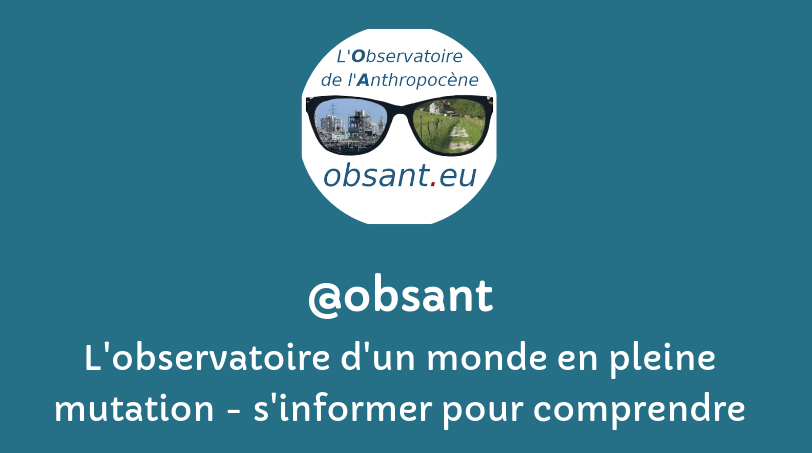Les champs auteur(e)s & mots-clés sont cliquables. Pour revenir à la page, utilisez le bouton refresh ci-dessous.
filtre:
or
The global economy could face a 50% loss in GDP between 2070 and 2090, unless immediate policy action on risks posed by the climate crisis is taken. Populations are already impacted by food system shocks, water insecurity, heat stress and infectious diseases. If unchecked, mass mortality, mass displacement, severe economic contraction and conflict become more likely.
Climate.gov, which went dark this summer, to be revived by volunteers as climate.us with expanded missionEarlier this summer, access to climate.gov – one of the most widely used portals of climate information on the internet – was thwarted by the Trump administration, and its production team was fired in the process.
Purpose Animal emissions account for nearly 60% of total greenhouse gas emissions from the livestock sector. To estimate these emissions, the Food and Agriculture Organization of the United Nations (FAO) developed a dedicated module within the Global Livestock Environmental Assessment Model (GLEAM). Although previous studies have explored selected inputs for specific animals and emission types, a comprehensive analysis of all 92 inputs (parameters and emission factors) had not been conducted. This study aimed to identify the most influential inputs affecting ruminant emissions in GLEAM.
Global risk management for human prosperity
Trump’s dictator-like behaviour is so brazen, so blatant, that paradoxically, we discount it. But now it’s time to call it what it is
The Atlantic meridional overturning circulation (AMOC) is an important tipping element in the climate system. There is a large uncertainty whether the AMOC will start to collapse during the century under future climate change, as this requires long climate model simulations which are not always available. Here, we analyze targeted climate model simulations done with the Community Earth System Model (CESM) with the aim to develop a physics-based indicator for the onset of an AMOC tipping event. This indicator is diagnosed from the surface buoyancy fluxes over the North Atlantic Ocean and is performing successfully under quasi-equilibrium freshwater forcing, freshwater pulse forcing, climate change scenarios, and for different climate models. An analysis consisting of 25 different climate models shows that the AMOC could begin to collapse by 2063 (from 2026 to 2095, to percentiles) under an intermediate emission scenario (SSP2-4.5), or by 2055 (from 2023 to 2076, to percentiles) under a high-end emission scenar
Gains in cutting deaths from tuberculosis at risk as health officials warn clinics forced to ration drugs and testing
Suspension of Soy moratorium could open up area of rainforest the size of Portugal to destruction
The world will warm more than expected due to future changes in ozone, which protects the Earth from harmful sun rays but also traps heat as it is a greenhouse gas. While banning ozone-destroying gases such as CFCs has helped the ozone layer to recover, when combined with increased air pollution the impact of ozone could warm the planet 40% more than originally thought.
New research catalogs several “abrupt changes,” like a precipitous loss of sea ice, unfolding in Antarctica with dire implications for us all.
This article examines the technocentric bias that characterizes climate mitigation literature, focusing on the reports of the IPCC's Working Group III. This bias stems from structural features of the scientific field that prioritizes innovation, leading to the overrepresentation of technological solutions in climate research. Funding mechanisms further reinforce this tendency by incentivizing collaboration with industrial R&D, creating a self-reinforcing loop in which scientific authority and industrial interests converge. The IPCC's institutional positioning—as a policy-relevant yet politically cautious body—amplifies this dynamic by favoring allegedly “cost-effective” technological pathways that lack practical feasibility.
The long read: Churning quantities of carbon dioxide into the atmosphere at the rate we are going could lead the planet to another Great Dying
Some experts tee up public comment on EPA report calling fossil fuel concerns overblown, as others fast-track review
Almost 100 countries reject draft treaty as ‘unambitious’ and ‘inadequate’
Those who destroy the living world should be charged with the international crime of ecocide
As corporate interest in ocean carbon removal grows, researchers from Woods Hole Oceanographic Institution are testing the safety and effectiveness of one such technique in the Gulf of Maine.
Record heat, massive fires, deadly floods... August has barely begun, but the summer of 2025 is already marked by a cascade of destructive and deadly weather in the Northern Hemisphere.
Nonylphenol is a toxic xenobiotic compound classified as an endocrine disrupter capable of interfering with the hormonal system of numerous organisms. It originates principally from the degradation of nonylphenol ethoxylates which are widely used as industrial surfactants. Nonylphenol ethoxylates reach sewage treatment works in substantial quantities where they biodegrade into several by-products including nonylphenol. Due to its physical–chemical characteristics, such as low solubility and high hydrophobicity, nonylphenol accumulates in environmental compartments that are characterised by high organic content, typically sewage sludge and river sediments, where it persists.
A decade ago several prominent climate scientists discussed the prospects of a 4C Earth. Their concern was qualified “… if greenhouse gases do not slow down, then expect a 4C Earth by 2055.” Of course, that would be catastrophic, and one can only assume those scientists must have recognized real risks. Otherwise, why address the issue of 4C by 2055 in the first instance?
The unspoken truth about humanity's frightening future.
![]()



